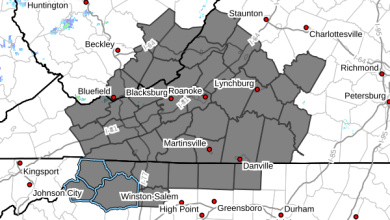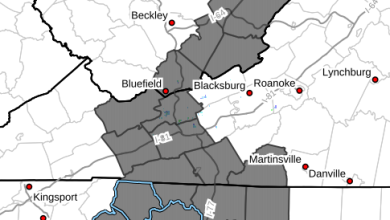Last Updated on February 12, 2022 6:41 pm
RALEIGH, N.C. – With bat pup season just around the corner, the N.C. Wildlife Resources Commission encourages homeowners to not conduct any bat eviction or exclusion until the end of July.
May through July marks the time frame when female bats are raising their young — called pups. Young bats, like other mammals, depend on their mother for survival during the first few weeks of life. If a homeowner installs an eviction device or covers up the hole that bats have used to get into the house, female bats will not be able to get to their young after a night of feeding, and the young bats will starve to death. If any bats are sealed inside, including pups that cannot fly, they will search for a way out and will die inside the house, or find their way into the homeowner’s living space.
Many bat species only take three to four weeks to fly, but some may require a slightly longer developmental period. However, different species of bats give birth to live young at different times during the summer, hence the three-month range.
Once the pup-rearing season has ended in late July, homeowners who have bats in their house should determine how they are getting into the house and install eviction devices that allow the bats to leave but prevent them from coming back into the home.
“Even a bat as large as a big brown bat can fit through an opening as small as 1 inch x 1 inch,” said Katherine Caldwell, a wildlife diversity biologist with the Commission. “We recommend that homeowners look for small holes in the house siding or spaces around utility boxes where a bat might be able to get in the house.’
Bat eviction devices can be purchased or made from PVC pipe or a variety of other materials. More information on bat exclusion guidelines is available on Bat Conservation International’s website.
People who would rather hire a professional to exclude bats from their homes can find a wildlife damage control agent in their area by visiting the Commission’s “Wildlife Damage Control Agent” webpage.
Bats return to the same roosts each spring, so it is important not only to maintain your home after excluding bats, but also to help displaced bats find alternate roosting spaces when they return. Homeowners can erect bat boxes near their homes. Place bat boxes on a pole or a building, not a tree, and at least 12 to 20 feet high in a place with at least seven hours of direct sunlight in the summer. For tips on building, buying or installing bat boxes see http://www.batcon.org/resources/getting-involved/bat-houses.
For questions regarding bats and other human-wildlife interactions, call the Commission’s N.C. Wildlife Helpline toll-free at 866-318-2401. The call center is open Monday through Friday (excluding holidays) from 8 a.m. to 5 p.m.
Read more tips on co-existing with bats and other wildlife, and learn more about bats in general by visiting the Commission’s wildlife species pages.
Learn how to Be Bat Friendly. (PDF)
















